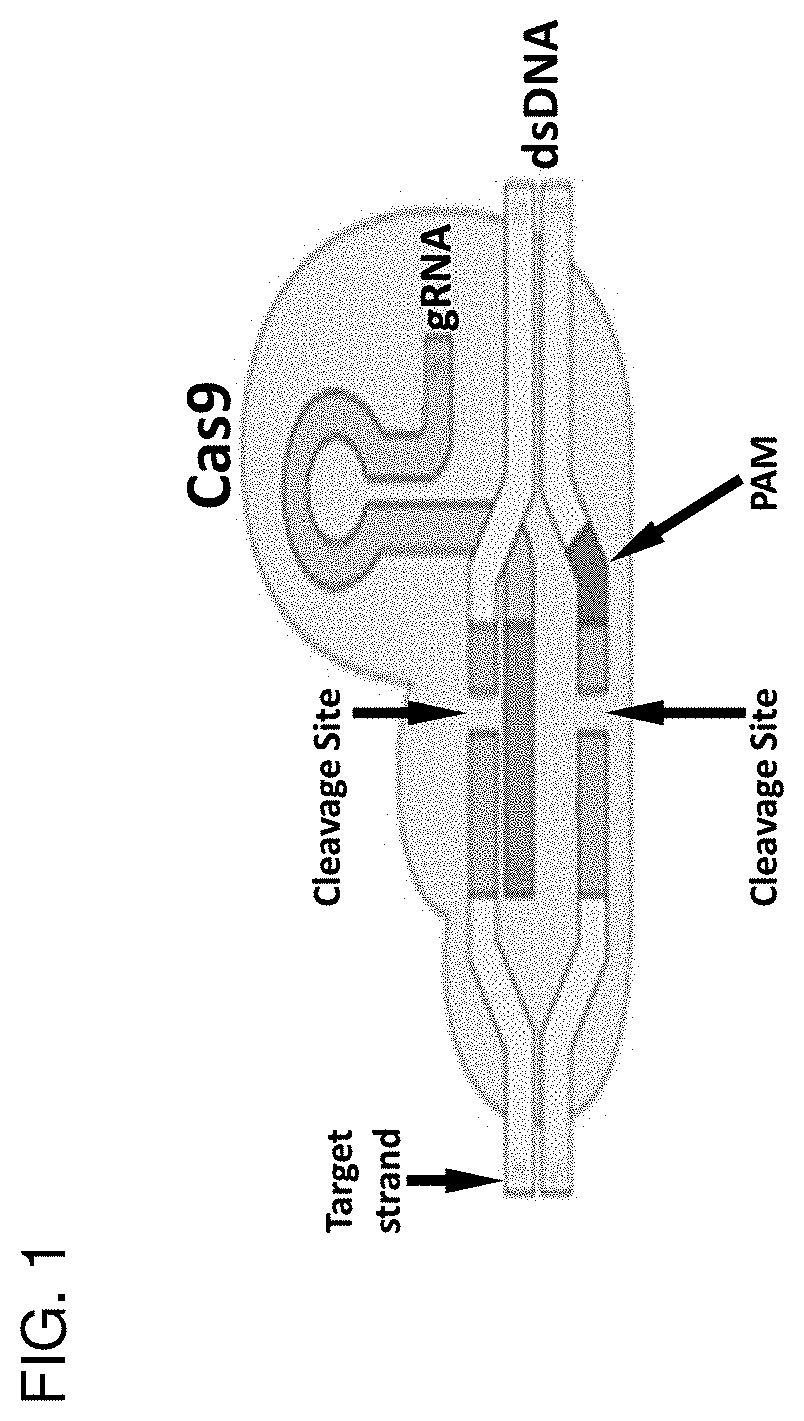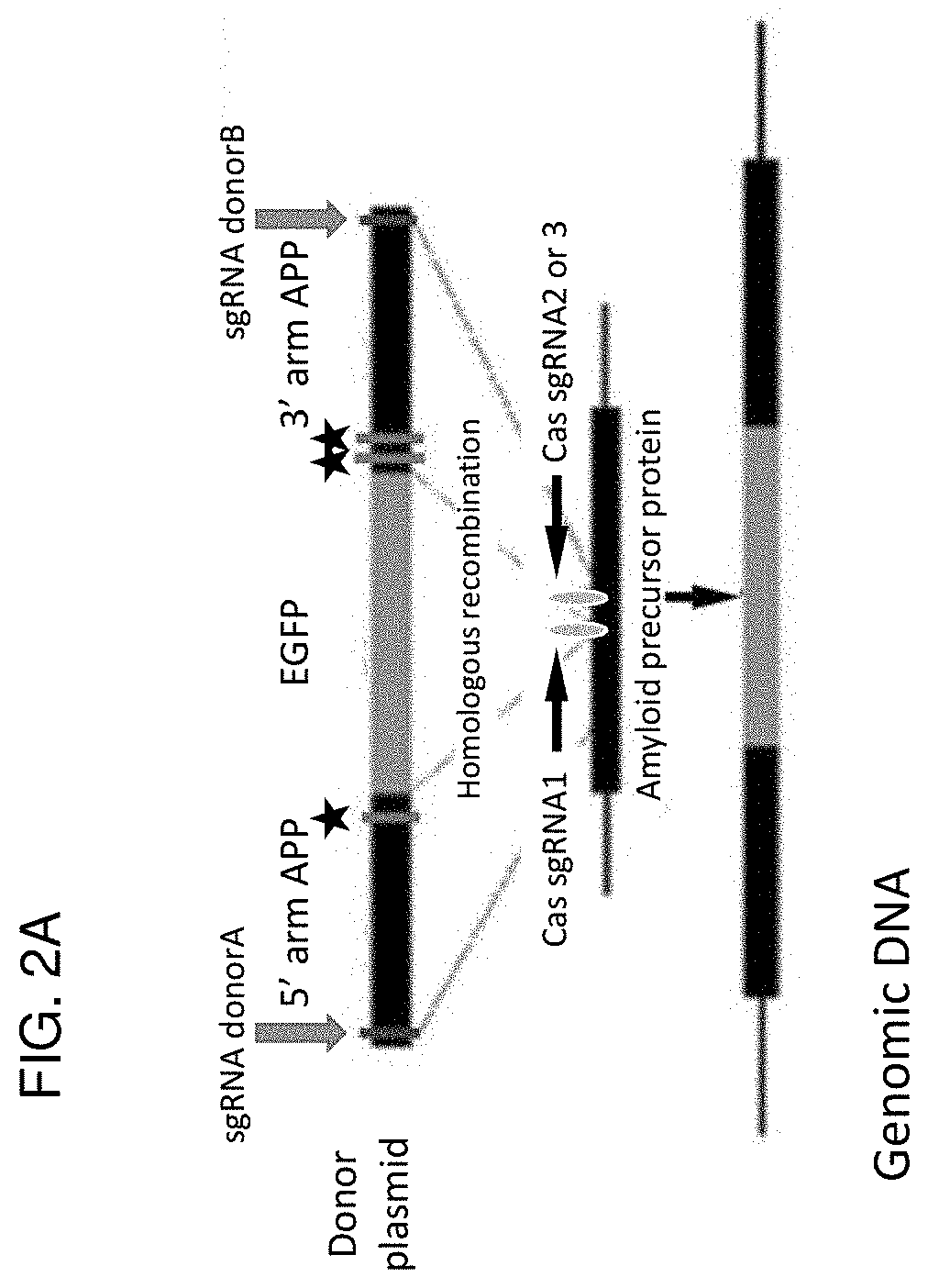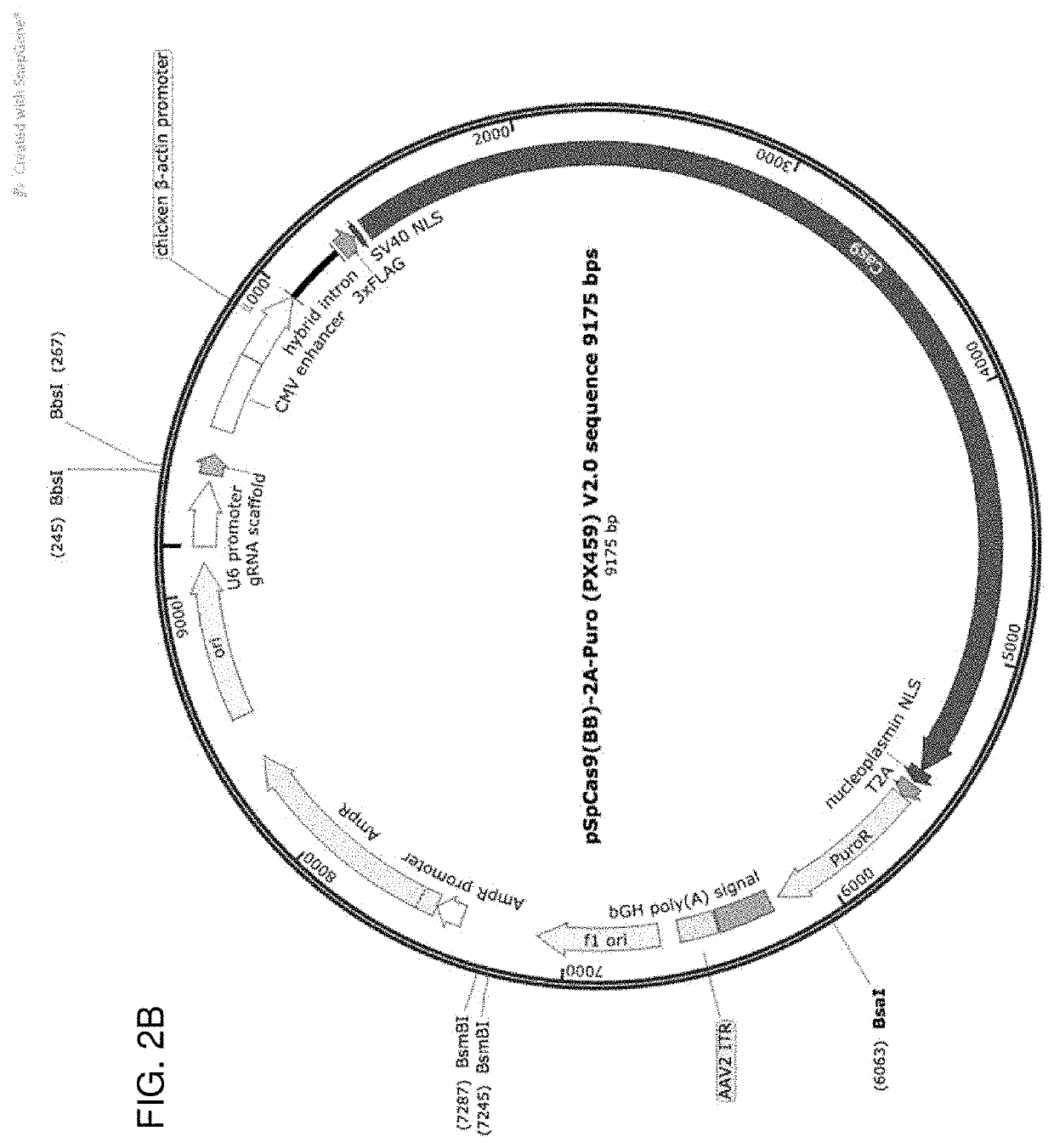Compositions and methods for homology directed repair
a technology of homology and repair, applied in the field of homology directed repair, can solve the problems of limiting the approach, toxicity, and allowing knocking in of large genetic segments, and customization of the approach for different systems would prove labor-intensiv
- Summary
- Abstract
- Description
- Claims
- Application Information
AI Technical Summary
Benefits of technology
Problems solved by technology
Method used
Image
Examples
example 1
[0411]We show that several modifications to the CRISPR / Cas9 approach significantly enhance the efficiency of HDR: 1) use of two sgRNA directed toward the targeted genomic DNA site, 2) use of two sgRNA directed toward the 5′ and 3′ flanking arms of the donor DNA, which have been modified to include a PAM or unique sgRNA sequence and allow for Cas9-sgRNA cleavage and to prevent cleavage by the sgRNAs used to target the genomic DNA, 3) insertion of the donor plasmid into a vector (e.g., an SV40 ori-containing vector) capable of plasmid reproduction in order to increase copy number of the donor DNA to be inserted into the genomic DNA in the subject to be treated, 4) use of an exonuclease fused to Cas9 to promote 3′ and 5′ overhang creation at the site of the DSB for the donor DNA molecule, and 5) sequence conversion of the bacterial exonuclease to a eukaryotic exonuclease to enhance expression and promote knock in of a donor DNA (e.g., as exemplified using enhanced Green Fluorescent Pro...
example 2
[0417]While enhanced knockdown efficiency is expected from the dual sgRNAs, we hypothesized that this same approach would inhibit reannealing of the DSB, prolong exonuclease activity, and enhance insertion of genomic material (e.g., eGFP). We observed greater efficiency of eGFP insertion with dual APP sgRNA1 and sgRNA3, and to a greater degree with APP sgRNA1 and sgRNA3 with mExo (FIG. 9, note the lower loading levels on b-actin, lanes 2 and 3). The addition of a beta protein from phage lambda did not enhance insertional efficiency (FIG. 9, lanes 5-7). Bacteriophage lambda encodes a 28 kDa protein (beta) that binds to single-stranded DNA and promotes the renaturation of complementary single strands. The knock in efficiency using dual sgRNAs and mExo approached 33%, as demonstrated by amplification of clonal cell lines and examination for APP-GFP expression (FIG. 10, clones c5 and c6 show appropriate insertion). Clones c1 and c3 show knockout of APP but no insertion of GFP whereas cl...
example 3
[0419]The efficiency of the CRISPR / Cas system described herein can be tested using an eGFP construct and sgRNAs in human DS iPS cells, primary Tc1 mouse neural progenitor cells, and glial cells. In this manner, different cell types and cells at different stages of development can be evaluated to ensure reproducibility and robustness of the integration.
[0420]We have established 2 DS iPS cells and their isogenic controls through the Harvard Human Pluripotent Stem Cell Core (CHB, Dr. Schlaeger). Genetic testing of one of the DS iPS lines shows three distinct microsatellite marker repeats at the D21S11 locus, implying that the three HSA21 copies are distinct and therefore each HSA21 chromosome would have different SNP variants. Primary neural, neuronal, and glial cultures are available for testing, and the Tc1 mouse is readily available from Jackson laboratories.
PUM
 Login to View More
Login to View More Abstract
Description
Claims
Application Information
 Login to View More
Login to View More - R&D Engineer
- R&D Manager
- IP Professional
- Industry Leading Data Capabilities
- Powerful AI technology
- Patent DNA Extraction
Browse by: Latest US Patents, China's latest patents, Technical Efficacy Thesaurus, Application Domain, Technology Topic, Popular Technical Reports.
© 2024 PatSnap. All rights reserved.Legal|Privacy policy|Modern Slavery Act Transparency Statement|Sitemap|About US| Contact US: help@patsnap.com










